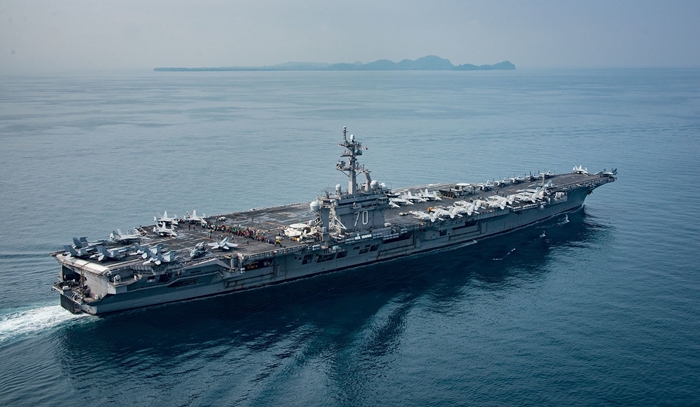April
American Nuclear Submarine arrives at South Korea

USS Michigan arrived the harbor of Busan, a city in southeastern South Korea, on 25 April. According to US Navy officials it is just a routine visit during a regular deployment in the Western Pacific. This visit supports the close partnership between the US Navy and the Navy of South Korea. In addition to this, it offers several opportunities to the crew for intercultural exchanges. During an interview with Fox Business News on 12 April President Trump said, the US would send an armada, very powerful, to Korea also containing submarines, very powerful. After naval exercises with the Japanese Maritime Self-Defense Force the Carrier Strike Group One with the aircraft carrier USS Carl Vinson, the guided-missile cruiser USS Lake Champlain and the guided-missile destroyers USS Wayne E. Meyer and USS Michael Murphy was expected to arrive at the Sea of Japan and thus in attack range of North Korea at the end of April. A scheduled visit in Perth (Australia) and naval exercises with the Australian Navy have been canceled. The North Korean leader, Kim Jong-un disseminated in the the official newspaper of the Central Committee of the Workers’ Party of Korea Rodong Sinmun that his armed forces are ready and able to annihilate an American aircraft carrier with one single strike and also, that he would be ready to give such order anytime. The US Navy answered that Carrier Strike Group One would be able to defend itself against every North Korean attack and against any sort of weapon. This was a response to contrary western press releases.

The port call of the USS Michigan in Busan (South Korea) coincides with the 85th anniversary of the foundation of the Korean People´s Army. On this occasion a big life-fire exercise was conducted in presence of the North Korean dictator Kim Jong-un. Over 300 self-propelled artillery units and 4 submarines participated in that exercise, during which they fired live rounds on targets in the Sea of Japan. Large swaths of the South Korean capital Seoul are within firing range of North Korean artillery. Another nuclear test with incalculable consequences seems to be placed on hold for the moment but seems to be feasible at anytime nonetheless.
USS Michigan belongs to the nuclear-powered Ohio-class of which 18 units are still in service. Submarines of the Ohio-class are the biggest submarines of the US Navy with a submerged displacement of 18.750 t. They have thereby roughly half the size of the Russian Typhoon-class, which are the largest submarines ever built. Equipped with 24 launching tubes for Trident II intercontinental ballistic missiles the Ohio-class was designed to conduct extended nuclear deterrence patrols on it´s own. These patrols last about two to three months and on the one hand are to bring the intercontinental ballistic missiles closer to their potential targets thus minimizing the warning time during a nuclear first strike. On the other hand they are to ensure the nuclear second-strike capability. After being commissioned on 11 September 1982 USS Michigan conducted 66 of these nuclear deterrence patrols. After the Cold War ended and the START II treaty was signed, the USA were to have only 14 SSBNs in service. 4 units of the Ohio-class, the USS Michigan being one of them, were then converted into guided-missile submarines (SSGN) instead of simply decommissioning them. 22 of the 24 Trident missile tubes were modified to accommodate a Vertical Launch System each containing 7 missiles. With a total capacity of launching 154 BGM-109 Tomahawk cruise missiles the converted Ohio-class has roughly the same firepower like a surface battle group. Two of the missile tubes were replaced by swimmer lockout chambers. A Dry Deck Shelter, a removable Module for submarines, can be attached to these lockout chambers. It allows up to 66 frogmen with their equipment and a number of swimmer delivery vehicles to easily exit and entrance while the submarine is submerged. With it´s improved communication equipment the converted Ohio-Class can serve as a forward-deployed, clandestine Small Combatant Joint Command Centre.

Weblinks:
